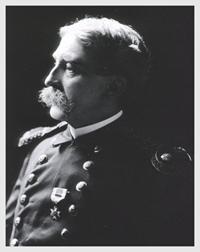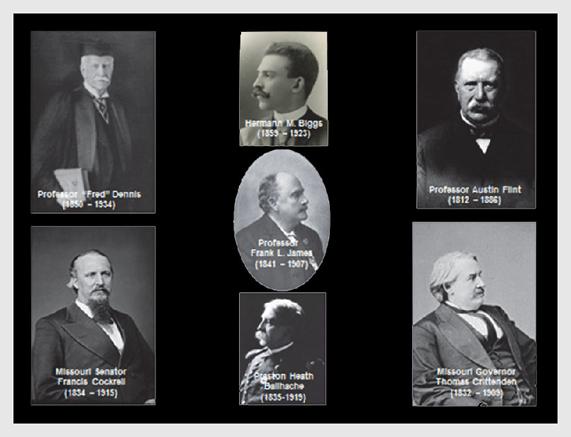Since neither the MHS nor any other federal agency had a bacteriology laboratory capable of studying human diseases, it is unclear what motivated Kinyoun’s next career move, to join the MHS. It is conceivable that his last-minute New York retraining on the specific subject of cholera, his MHS appointment, and his subsequent MHS assignment had somehow been prearranged. In 1885–1886, MHS Surgeon General John B. Hamilton (1847–1898) was engaged in responding to popular demand for a national public health system by building up the MHS and trying to favorably position it over a competing federal agency, the National Board of Health (2, 25). Hamilton’s right-hand man in these efforts was Joe Kinyoun’s uncle, MHS Surgeon Preston Heath Bailhache (1835–1919) (Figure 7), friend of the late President Lincoln and physician to Lincoln’s children. Whatever the circumstances surrounding Kinyoun’s interest in the MHS, Hamilton undoubtedly saw the new discipline of bacteriology as a way to advance the Service’s prospects and establish a new level of certainty in making quarantine decisions. Cholera was among the top MHS priorities; Hamilton had just cowritten a book on the subject that emphasized the importance of “bacterioscop[ic]” diagnosis (about which he had apparently just become familiar) as well as essential laboratory equipment and techniques for cholera isolation (26).

Figure 7. Preston Heath Bailhache (1835–1919) was Kinyoun’s uncle and a powerful senior physician in the MHS. It is conceivable that he encouraged or arranged for Kinyoun to join the MHS. Bailhache and his brother William were close friends of Illinois presidential candidate Abraham Lincoln. When Lincoln was elected President, William helped him prepare his first inaugural address. Preston Bailhache was physician to Lincoln’s children.
In his MHS application, Kinyoun stressed his unique bacteriology experience and submitted supporting letters from his old professors Dennis and Flint, from Biggs, from a colorful physician/microscopist/adventurer and Confederate bombmaker, and from two prominent politicians (Figure 8). For good luck, Kinyoun also brought a rabbit’s foot to his 5 April 1886 MHS exam, later claiming, according to one source, that it helped him score “at the head of [his] class of seven or eight” (25). (MHS records document a score of 73.6 percent, barely a passing grade, placing Kinyoun fifth out of nine applicants [20]). Kinyoun remained on a waiting list for upcoming MHS vacancies, and when a position became available a few months later, he took it.

Figure 8. In his 1886 MHS application, Kinyoun stressed his unique bacteriology experience and sought support from prominent academicians, politicians, and one colorful adventurer. In addition to letters from his old professors, Frederick Shepard (“Fred”) Dennis (1850–1934) and Austin Flint, Sr. (1812–1886) (upper left and upper right, respectively), he also sought the support of his Missouri neighbor, Senator and former Confederate Brigadier General Francis M. Cockrell (1834–1915; lower left), as well as Governor and Union war hero Colonel Thomas T. Crittenden (1832–1909; lower right). (Crittenden had become notorious for [allegedly] arranging the extra-legal assassination of Jesse James by Robert Ford, then pardoning Ford after his murder conviction). Kinyoun also got supporting letters from fellow Bellevue student and friend and later bacteriology instructor Hermann M. Biggs (1859–1923; top center), and a professor of chemistry and toxicology during his 1881 St. Louis course, the colorful microscopist and inventor Frank L. James, M.D., Ph.D. (1841–1907; center), who had trained in Germany under chemist and infectious disease theorist Justus von Liebig (1803–1873) before becoming a spy, bombmaker, and terrorist for Confederate President Jefferson Davis (1808–1889).

